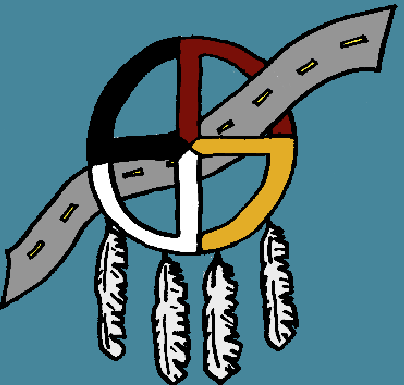…continues dialogue and sparks reflection
Since Nov. 2002, Dakota Indians have made an annual 150-mile journey from Lower Sioux Indian community to Fort Snelling in honor of the Dakota men, women and children who were forcibly removed to concentration camps in Mankato and Fort Snelling in Nov. 1862. This year, Gustavus Adolphus College, along with the Nicollet County Historical Society (NCHS), have had the opportunity to help commemorate the 1700 Dakota Indians forced to march the “Minnesota Trail of Tears.”
From Nov. 7 to Nov. 13th, Dakota families took the march that their ancestors took 150 years ago. In this walk, non-Dakota people were invited to join them in prayer, help provide for the needs of those who were walking, help ensure that the Dakota story had an opportunity to be heard and symbolically provide support to the Dakota community by being present.
“This is the 150th anniversary of the Dakota War,” Executive Director of Nicollet County Historical Society Ben Leonard said. “A lot of these events have been happening for years, but it’s been a big year for us to interpret [Dakota people’s] history, and through that process we’ve become friends with people in the Dakota community. This is part of honoring that relationship—by providing a space for them to stop and rest.”
The commemorative march stopped briefly last Saturday, at NCHS, where Gustavus provided food and water for those participating in the walk.
To show support for the march, Gustavus staff and students attended the brief lunch, participated in the ceremonies and engaged with Dakota people along their walk.
“Each stop was dedicated to a different family, different people,” Senior Alex Christensen said.
“At every mile marker, we would exit the car, with a couple elder women saying a prayer and planting a dogwood stake in the ground,” Christensen said. “Each of these stakes had a red ribbon on it—red being a sacred color—with leather strips. The leather strips had the name of two women or children who were on the forced march. Once the stake was in the ground, the elder women would do a tobacco offering first, then everyone else would file through and do one as well. There was a small leather bag filled with tobacco. You take a small pinch, walk up to the stake, sprinkle it at the base and pause for a moment. It was a moment of reflection and commemoration.”
The march was accompanied by different people who wanted to help—those who were friends of Dakota Indians, those who were indebted and those who simply wanted to show support. Following the caravans of people participating, Twin Cities Public Television (TPT) was also covering the march.
Director of the Athletic Training Education Program Kyle Momsen facilitated the lunch last Saturday, working with Stephanie Hope Smith, a resident in Bloomington, Minnesota.
“I’ve become more aware of opportunities for non-Dakota people to show support. Along with my husband and son, we’re all helping with pieces of the puzzle,” Smith said.
The previous year, Smith had served as medical staff for those taking part in the march, assisting in splinters, foot care, food and transportation.
Junior Envirornmental Studies Major Sam Warburton, who works for the NCHS, also played an important role in providing food for the Dakota marchers, helping set up and directing people where to go. Sam took the January Interim course last year with Ben Leonard. He reflected on the significance of the march.
“One of the women told me that one of her ancestors had marched out of the state. What do you say to that?” Warburton said. “You don’t have anything to say—but you don’t really need to say anything. You just need to listen because for a long time no one listened to them—to what happened to them, the atrocities that they are still suffering from.”
The attendence of Gustauvs students at this event furthers the kind of consciousness raised by last year’s Building Bridges Conference, “Unresolved Conflict: Commemmorating Controversey,” which focused on American Indian histories and contemporary concerns. It shows that an effort is still being made to carry on this consciousness with the hopes of leaving a lasting impact on history.
“The strength of events like this is about how many people we reached,” Leonard said. “What did we do in 2012 that furthered the discussion, the friendship and the relationships that we have built in the next years? What have we done this year to give us a better opportunity to be much closer once we’re at the 200th anniversary? The general public is learning about Dakota history, about the Dakota perspective and viewpoints about 1862 that the public hasn’t known before. I hope that by the 200th anniversary, we are just talking about our history, a complete picture, not from the white or just the Native American perspective—but as our shared history.”
The healing happens on both ends—for those who have been directly involved, and for those who have decided to become an active agent of support.
“For me, personally, [the march] was an extension of the journey that I started a few years ago, another time where I could think about my family’s participation in this history,” Christensen said. “And I appreciate the opportunity to be able to interact with Dakota people and the Dakota community. I get a sense of healing from them.”
